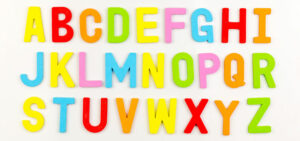Managing customer data efficiently is key to maintaining smooth operations and delivering top-notch service.
One of the core tools used for this purpose is an account code – a unique identifier assigned to each customer or client.
We take a look at what account codes are, why they’re important, and how they help companies operate more efficiently and securely.
What is an Account Code?
An account code is a series of characters used to identify a client, which might be an individual customer or a corporate entity. Companies often have an in-house way of referring to account codes, such as ‘account number’ or ‘Customer Reference Number’ (CRN).
However, a code may be non-numeric, and this distinguishes the term ‘account code’ from ‘account number’.
An account code will usually be generated automatically by a business as soon as a new customer joins them. They will almost always conform to a set format; for example, UK National Insurance numbers are a type of account code, and they all follow the format AA 11 11 11 A.
This makes it easier to direct customers to their account codes, simply by confirming the format of the information they have.
The Purpose of Account Codes
Account codes are typically used for a variety of practical purposes involved with identifying the customer. Codes are generated for each individual client, which avoids confusion between customers with the same name or other personal details.
It also makes it simpler for customers to identify themselves to IVR systems, which are better able to recognise numbers and letters than full names.
Locating clients within a company database is also much easier, as there is no need to clarify spelling or check numerous pieces of information to establish whether the correct customer records are being viewed.
Because the code is generated by the company itself, it is guaranteed not to change, unlike other details such as addresses, phone numbers, or even names.
This code is typically used to track and manage the customer’s interactions, transactions, and financial details. Here’s a bit more detail:
- Unique Identifier: The code is unique to each customer, ensuring that all transactions and interactions associated with that customer are accurately recorded under their account.
- Record Keeping: It helps in organizing customer data, making it easier for businesses to access and manage customer information, such as contact details, order history, payment records, and communication logs.
- Billing and Invoicing: In financial systems, the customer account code is often used for billing purposes, ensuring that invoices, payments, and credits are correctly applied to the right customer.
- Security: It adds a layer of security, ensuring that sensitive customer information is stored and accessed only in relation to the correct account.
- Efficiency: For businesses with a large customer base, the account code streamlines processes by allowing for quick lookup and reference, reducing errors, and improving efficiency.
There is also much less risk to security involved. Personal information and financial details are subject to data protection and PCI compliance.
Account codes, however, do not carry a meaningful risk of fraud as they only apply to the customer’s relationship with one institution. This means that they can be provided on correspondence or over the phone without a significant safety concern.
Account codes can also be a part of the process for how customers log in to online services. The increasing need for robust online security practices means that account codes are often part of a two-step verification process.
The additional step will usually be a password, a response to a memorable question or a single-use code sent via email or SMS.
Using account codes allows auditors to view customer accounts without viewing any identifying information about the customer such as their age or nationality.
Account Codes Examples
Alphanumeric Format:
- CUST12345
- ABC78910
Numeric Format:
- 100245
- 987654
Date-Based Format:
- CUST20230821
- 2024CUST567
Segmented Format:
- NY-00123
- EU-500789
Customized or Industry-Specific Format:
- HOTEL-GUEST-09876 Hospitality Account Code)
- MED12345-PAT (Healthcare Account Code)
- ORD-001-4567 – (Order Account Code)
- SHP-02468-LOG – (Shipment Account Code)
- POL-678901234 – (Policy Number)
Author: Hannah Swankie
Reviewed by: Robyn Coppell
Published On: 7th Apr 2017 - Last modified: 4th Apr 2025
Read more about - Definitions



































